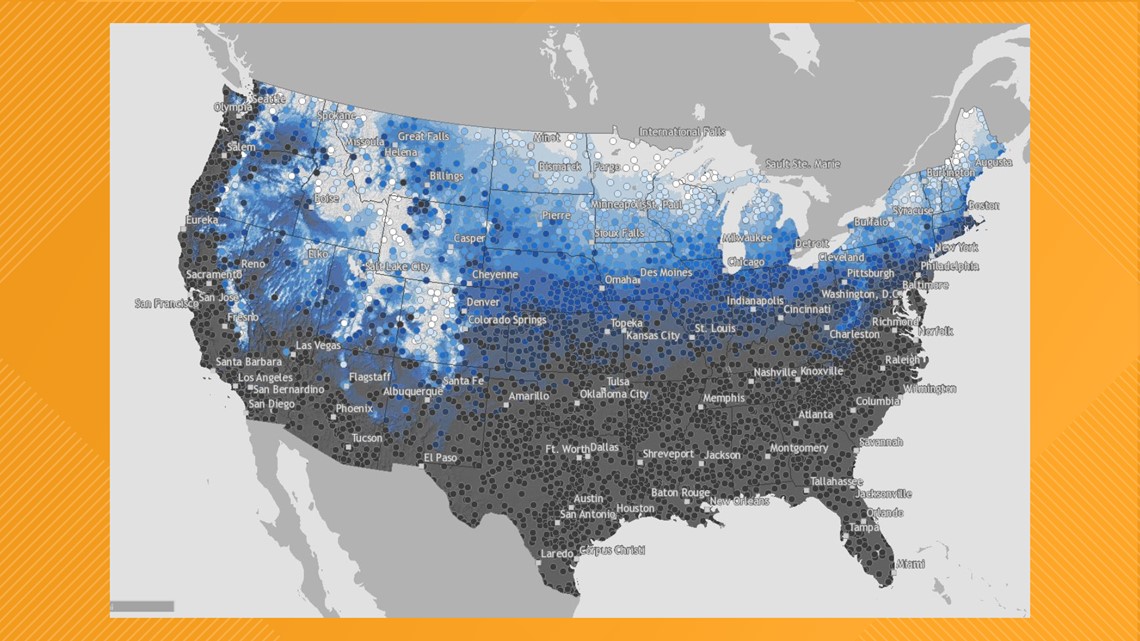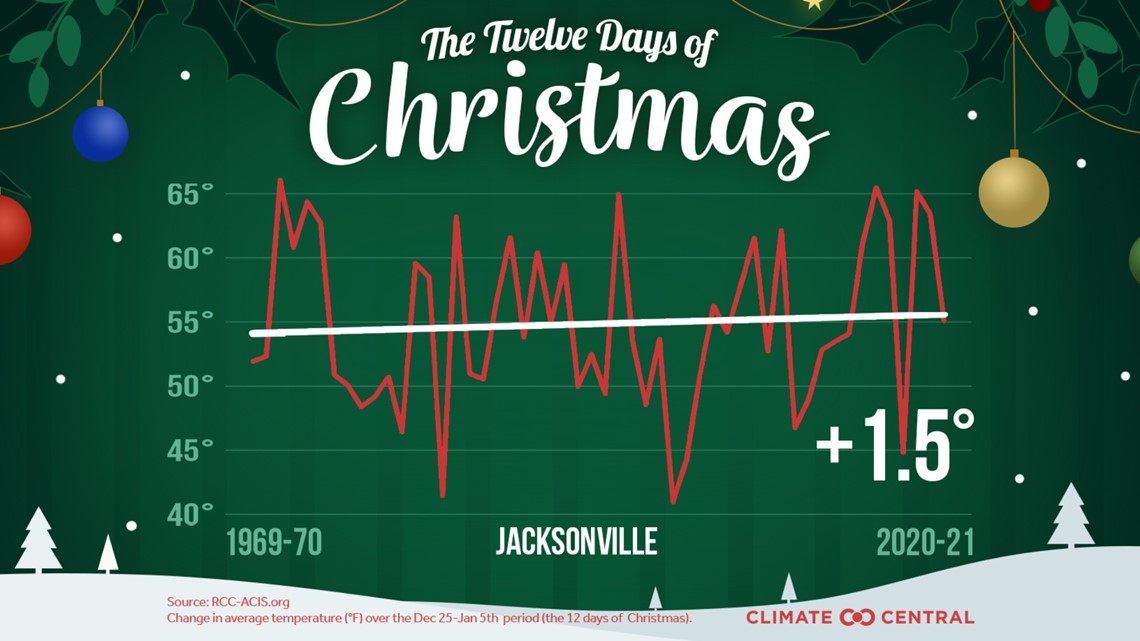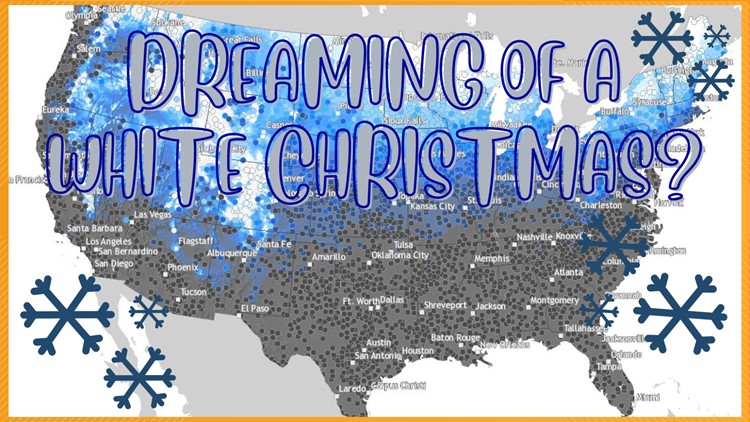JACKSONVILLE, Fla. — Sorry, Jacksonville.
There will be no snow across the First Coast this Christmas. Was there really ever any doubt in that forecast though? Our chances of seeing a white Christmas here to begin with are slim to none.
However, there are places across the United States where weather history suggests you would want to be if you're looking for the best chance of a white Christmas.
For starters, Alaska, Minnesota, or Maine are good bets. Does that come to a surprise? Other places like Upstate New York, the Allegheny Mountains of Pennsylvania and West Virginia, Idaho, and the Rockies or the Sierra Nevada Mountains always have high chances of seeing the white stuff on the ground as Santa is delivering gifts to all the good girls and good boys.
The National Oceanic and Atmospheric Administration defines a "white Christmas" with at least one inch of snow on the ground by 7 a.m. Christmas morning.
What about this year?
The forecast for Christmas Day 2021 calls for snow in most of North Dakota, the northern half of Minnesota, northern Wisconsin, and most northern parts of Michigan, including the Upper Peninsula.
Ahead of Christmas, NOAA released an interactive map that shows the average percent chance of seeing snow in towns across the country.


This data comes from the "Climate Normals." The 1991–2020 Climate Normals are the latest three-decade averages of several climatological measurements. This collection contains daily and monthly Normals of temperature, precipitation, snowfall, heating and cooling degree days, frost/freeze dates, and growing-degree days calculated from observations at nearly 15,000 stations, the majority of which are operated by operated by NOAA’s National Weather Service.
A recent study by Climate Central suggests the Twelve Days of Christmas (December 25 to January 5) have been warming for 97% of locations evaluated since 1969, and that with a warmer climate, it is likely that more winter precipitation will fall as rain rather than snow in many parts of the country.


Also, according to the report, warming has exceeded 1°F for 94% of locations, 3°F for 75% of locations, and 5°F for 37% of locations. Temperatures have climbed from coast to coast. The locations that have warmed the most are: Reno, Nev. (9.5°F); Burlington, Vt. (9.1°F), Milwaukee, Wisc. (8.6°F), Helena, Mont. (8.5°F), and Waterloo, Iowa (8.4°F).



